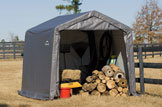So basically I've been struggling with this one ever since I got the XS. I'm a little electrically challenged I think.
The previous owner of my bike converted the turn signals to LEDs. They look a lot nicer than the stock ones (those are HUGE on the Seca) but they have never flashed with me. They just go on, or off; no flashing. Guess the PO didn't finish the job, which is a pity.
So I got myself a LED flasher relay (3 pin), dug into the frame of my XS and stuck it on there. No lights went on anymore.
So my first thought was that the new relay was bad. With the 3 pins there's no other obvious way to connect the relay, so my idiot brain figured to go back to the shop with it. I did that, only to come back and get a new one a few weeks later because I hadn't tried switching the wires yet.
My next move was to just try different connections. With some pieces of wire I connected the 3 pins to the 3 holes on the bike's connector in all possible configurations. None of them worked.
Then I read here that it may be necessary to add an extra ground connection to the relay for it to work. I tested which wire was the ground wire using my electrical tester device (whats that called, voltmeter?) anyhow, I hooked up an extra wire from that one to the frame and stuck my new relay on. Then, after a small spark, all the lights went out, and I blew the signal fuse
I'm getting close to giving up and getting a mechanic to fix it for me... which I hate cuz I want to be able to fix everything on the bike. So I'm off to get new fuses because that was my last replacement.
What am I doing wrong?? And besides from identifying the ground wire, is there a way to tell which wire should go to which pin? there are markings on the relay (E for earth, and then there's L and B I think. I'm guessing B is battery, and L is lead or something?). And how would I test that with my voltmeter?
The previous owner of my bike converted the turn signals to LEDs. They look a lot nicer than the stock ones (those are HUGE on the Seca) but they have never flashed with me. They just go on, or off; no flashing. Guess the PO didn't finish the job, which is a pity.
So I got myself a LED flasher relay (3 pin), dug into the frame of my XS and stuck it on there. No lights went on anymore.
So my first thought was that the new relay was bad. With the 3 pins there's no other obvious way to connect the relay, so my idiot brain figured to go back to the shop with it. I did that, only to come back and get a new one a few weeks later because I hadn't tried switching the wires yet.
My next move was to just try different connections. With some pieces of wire I connected the 3 pins to the 3 holes on the bike's connector in all possible configurations. None of them worked.
Then I read here that it may be necessary to add an extra ground connection to the relay for it to work. I tested which wire was the ground wire using my electrical tester device (whats that called, voltmeter?) anyhow, I hooked up an extra wire from that one to the frame and stuck my new relay on. Then, after a small spark, all the lights went out, and I blew the signal fuse

I'm getting close to giving up and getting a mechanic to fix it for me... which I hate cuz I want to be able to fix everything on the bike. So I'm off to get new fuses because that was my last replacement.
What am I doing wrong?? And besides from identifying the ground wire, is there a way to tell which wire should go to which pin? there are markings on the relay (E for earth, and then there's L and B I think. I'm guessing B is battery, and L is lead or something?). And how would I test that with my voltmeter?




